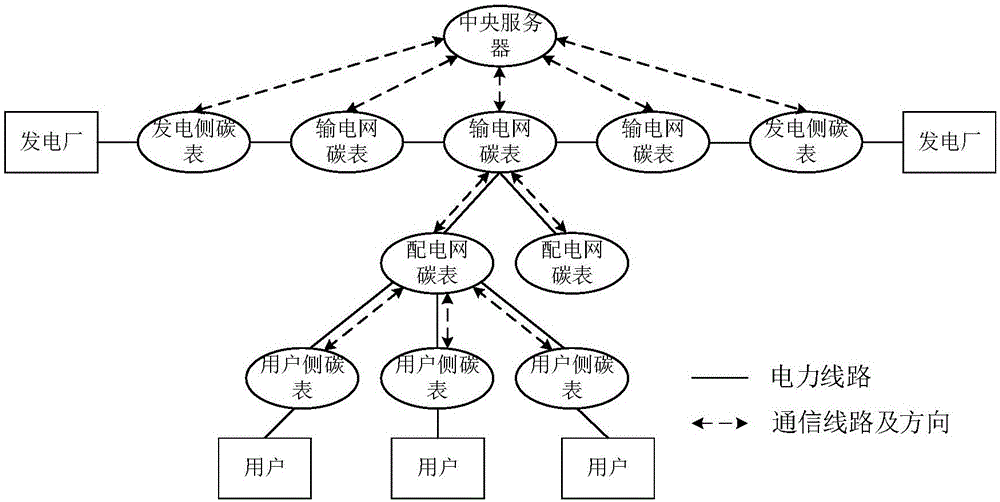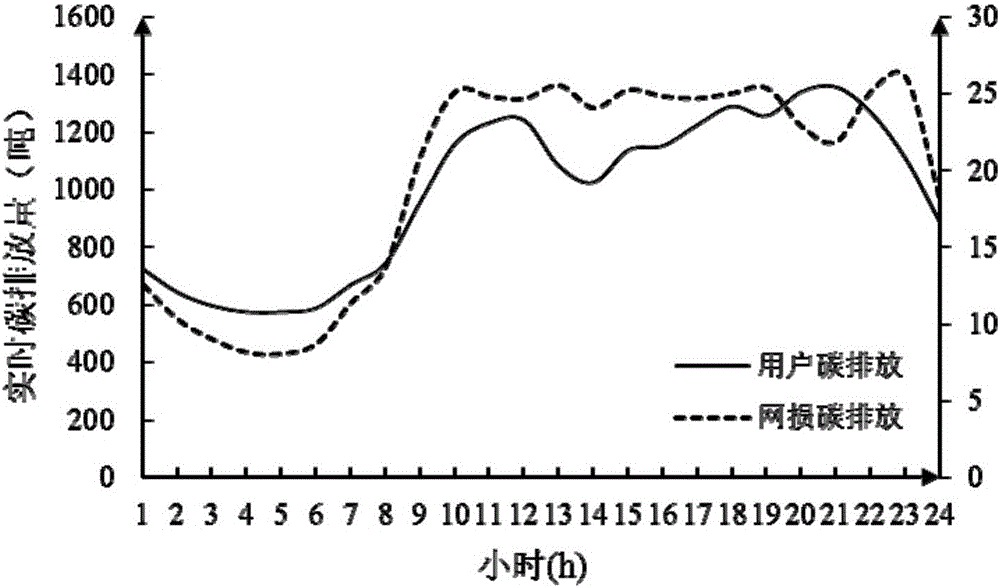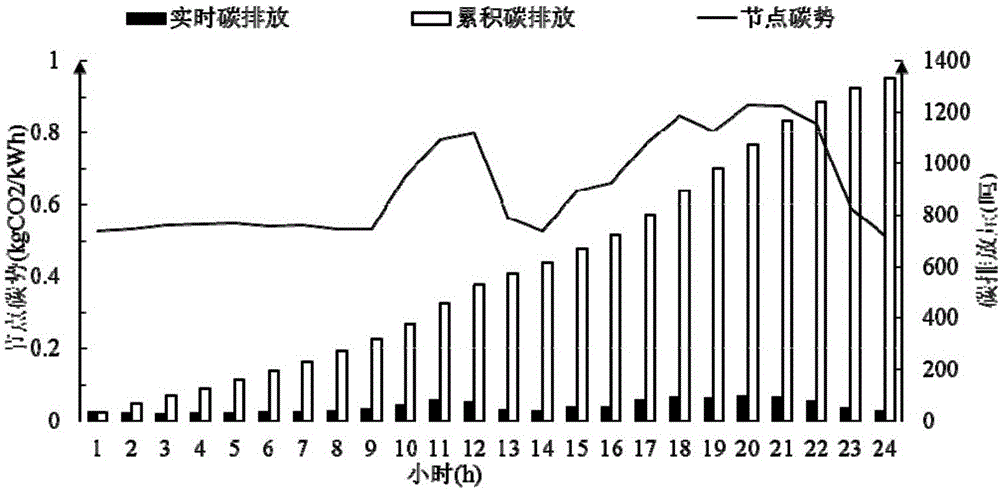Electric power system carbon emissions real-time measuring method and carbon meter system
A power system, real-time measurement technology, applied in system integration technology, information technology support system, computing, etc., can solve the problems of inability to realize real-time measurement of carbon emissions, inability to intuitively display carbon emissions, and unfavorable real-time carbon emissions for power users.
- Summary
- Abstract
- Description
- Claims
- Application Information
AI Technical Summary
Problems solved by technology
Method used
Image
Examples
Embodiment Construction
[0052] A method for real-time measurement of carbon emissions in a power system and a carbon meter system proposed by the present invention will be further described in detail below in conjunction with the accompanying drawings and specific embodiments.
[0053] A method for real-time measurement of carbon emissions in a power system proposed by the present invention, the method specifically includes the following steps:
[0054] 1) Determine the basic indicators of the carbon emission flow of the power system;
[0055] The basic indicators of power system carbon emission flow include node carbon potential, carbon flow rate, carbon flow and branch carbon flow density. The specific definitions of each indicator are as follows:
[0056] 1-1) Node carbon potential: the carbon emissions on the power generation side caused by the generation or transmission of unit electric energy at the node, the unit is kgCO 2 / kWh; node carbon potential needs to be obtained through the calculati...
PUM
 Login to View More
Login to View More Abstract
Description
Claims
Application Information
 Login to View More
Login to View More - R&D
- Intellectual Property
- Life Sciences
- Materials
- Tech Scout
- Unparalleled Data Quality
- Higher Quality Content
- 60% Fewer Hallucinations
Browse by: Latest US Patents, China's latest patents, Technical Efficacy Thesaurus, Application Domain, Technology Topic, Popular Technical Reports.
© 2025 PatSnap. All rights reserved.Legal|Privacy policy|Modern Slavery Act Transparency Statement|Sitemap|About US| Contact US: help@patsnap.com



